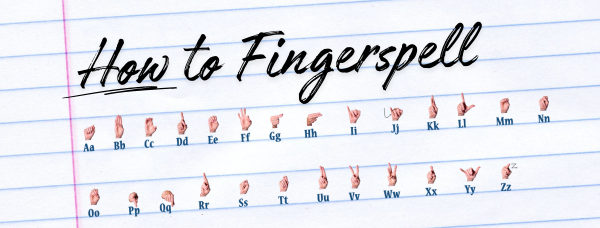
How to Fingerspell
Fingerspelling is an important part of American Sign Language where individual letters of the manual alphabet are signed to spell out English words. Fingerspelling has various but specific uses within ASL, including when signing proper nouns, names, titles, specific words with no sign, and when clarification is needed. For more information, see the article: What is Fingerspelling?
The ASL manual alphabet's historical roots come from a book of prayers written by a Franciscan monk, Melchor Yebra in 1593 in Spain. The concept of a hand shape to represent letters of the alphabet was then borrowed for use in educating the deaf in Paris, where Laurent Clerc was a pupil and an instructor. Laurent Clerc then brought that practice of fingerspelling as an integral component of signed language to the United States when he and Thomas Gallaudet established the first school for the deaf in Connecticut in 1817. If you are interested in learning more about the origins of fingerspelling, check out the article: Fingerspelling History
Here are some steps explaining HOW to fingerspell to help you get started on your journey of signing.
1. There is one ASL sign for each English letter.
The ASL alphabet is called the manual alphabet and there is a sign for each English letter in the alphabet. It does not matter if a letter is capitalized or lowercase in written English, the same ASL sign is fingerspelled for the letter.

2. Use only your dominant hand when fingerspelling.
In American Sign Language some signs use one hand and others use two hands. Fingerspelling uses only one hand. Use your dominant hand when fingerspelling. For more information, see the article: Does it matter which hand I sign with? Using Your Dominant Hand When Signing

3. Use proper signing space.
Signing space is where you form signs. To achieve the correct fingerspelling signing space, bend your elbow so your dominant hand is in front of your chest, with your palm facing forward. This allows your chest to be a solid background for better readability. For more information, see the article: Signing Space When Fingerspelling

4. Remember to pay close attention to your palm orientation when learning your signs for each letter the first time.
It can vary depending on what letter you are signing, but your palm should generally face out toward the receiver, not toward yourself when you fingerspell. In group settings, it is not possible to direct your spelling to all receivers.
Also, new signers are sometimes confused when some resources may show new learners a side view so they can get a better idea of the handshape for a sign. Signing Savvy teaches each letter as you would see it signed to you, which is how you should sign it to others.

5. Learn the signs that make up the alphabet.
Start with the letter A in our pre-built Fingerspelling / Alphabet Word List. Look closely how each letter is formed. Read the sign description, under the sign video, for a detailed description on how to form the sign. The memory aid also has useful information.
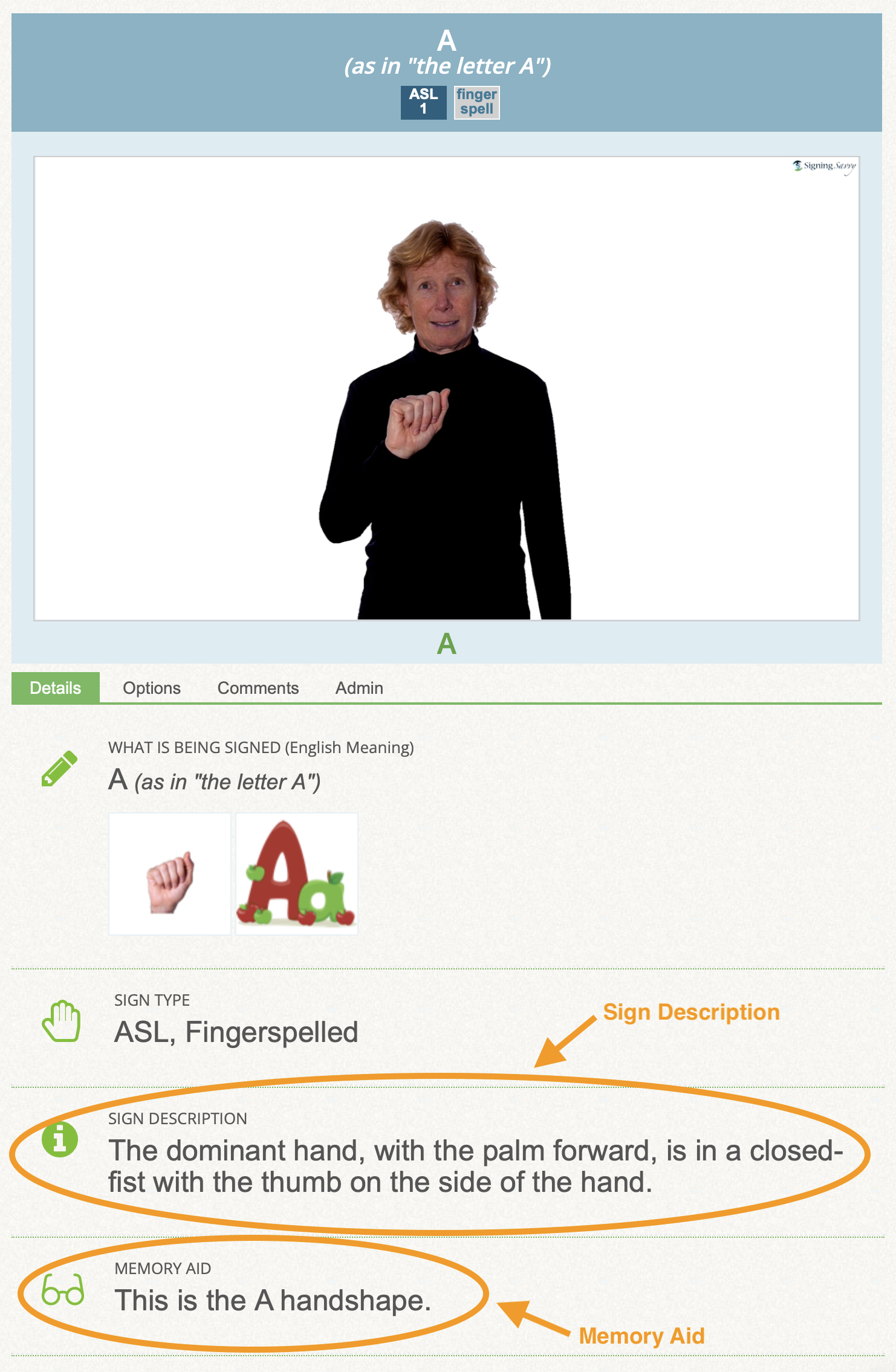
Use the arrow under the name of the word list, where the number of words is displayed to progress to the next sign / letter.
You can also go to the Word List Homepage at any time by clicking on the name of the word list. This page will give you a description of the word list and show a clickable list of all of the signs in the word list.
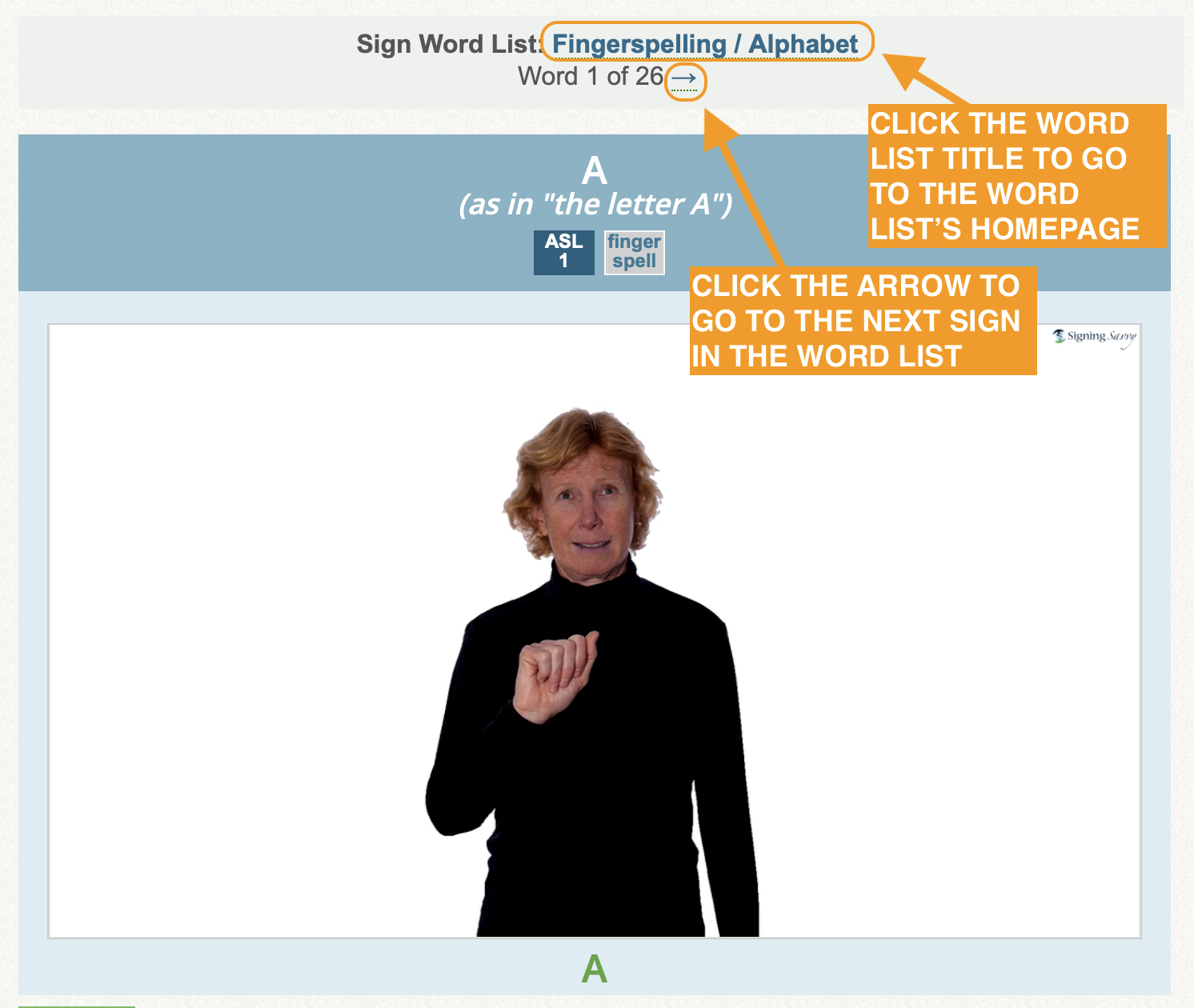
>> Go through the Fingerspelling / Alphabet Word List now, starting with the letter A. <<
After you have gone through the Fingerspelling / Alphabet Word List and learned each letter, you may want to check out our article on Common Fingerspelling Mistakes New Signers Make to make sure you aren't making any of those same mistakes.
6. Fingerspell words by stringing the letter signs together to spell each word.
Take your time and clearly sign each letter as you fingerspell. For more tips see the article, Tips When Starting to Fingerspell
7. Practice, practice, practice
Fingerspelling takes practice. It will not be easy at first, but the more you practice the better you will get at both expressive (doing it yourself) and receptive (understanding someone else doing it) fingerspelling.
To practice your expressive skills, the first, natural thing to try mastering is fingerspelling your first and last name, since this is usually the first thing you spell when you meet a deaf person. After this, progress to fingerspelling other words.
To practice your receptive skills, Signing Savvy has a Fingerspelling Quiz Tool and a Fingerspelling Digital Flash Cards Tool you may use.
Also, consider taking our Introduction to Fingerspelling and the Alphabet in American Sign Language course. This beginner-friendly course introduces you to the ASL alphabet and the basics of fingerspelling. It is included as part of Signing Savvy membership.
Reference / Handout of the ASL Alphabet

Signing Savvy Member Feature: Download this image / flyer as a printable PDF page.
ADVERTISEMENTS
 Brenda Cartwright is a Coda, seasoned interpreter, a master teacher, well known presenter, and author of several best selling sign language and interpreting textbooks from the RID Press. For 35 years Brenda was the Chair of the Sign Language Interpreter Program at Lansing Community College in Lansing, Michigan.
Brenda Cartwright is a Coda, seasoned interpreter, a master teacher, well known presenter, and author of several best selling sign language and interpreting textbooks from the RID Press. For 35 years Brenda was the Chair of the Sign Language Interpreter Program at Lansing Community College in Lansing, Michigan. Fingerspelling History
Fingerspelling History What is Fingerspelling?
What is Fingerspelling? Signing Space When Fingerspelling
Signing Space When Fingerspelling Tips When Starting to Fingerspell
Tips When Starting to Fingerspell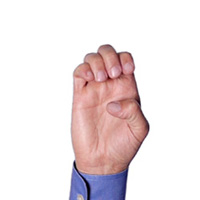 Common Fingerspelling Mistakes New Signers Make
Common Fingerspelling Mistakes New Signers Make Fingerspelling Warm-Up Activities to Prevent Repetitive Motion Injuries
Fingerspelling Warm-Up Activities to Prevent Repetitive Motion Injuries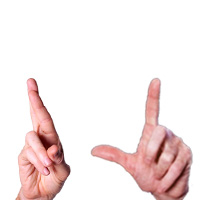 Does it matter which hand I sign with? Using Your Dominant Hand When Signing
Does it matter which hand I sign with? Using Your Dominant Hand When Signing Name Signs: What Are They and How Does a Person Get a Name Sign?
Name Signs: What Are They and How Does a Person Get a Name Sign?






